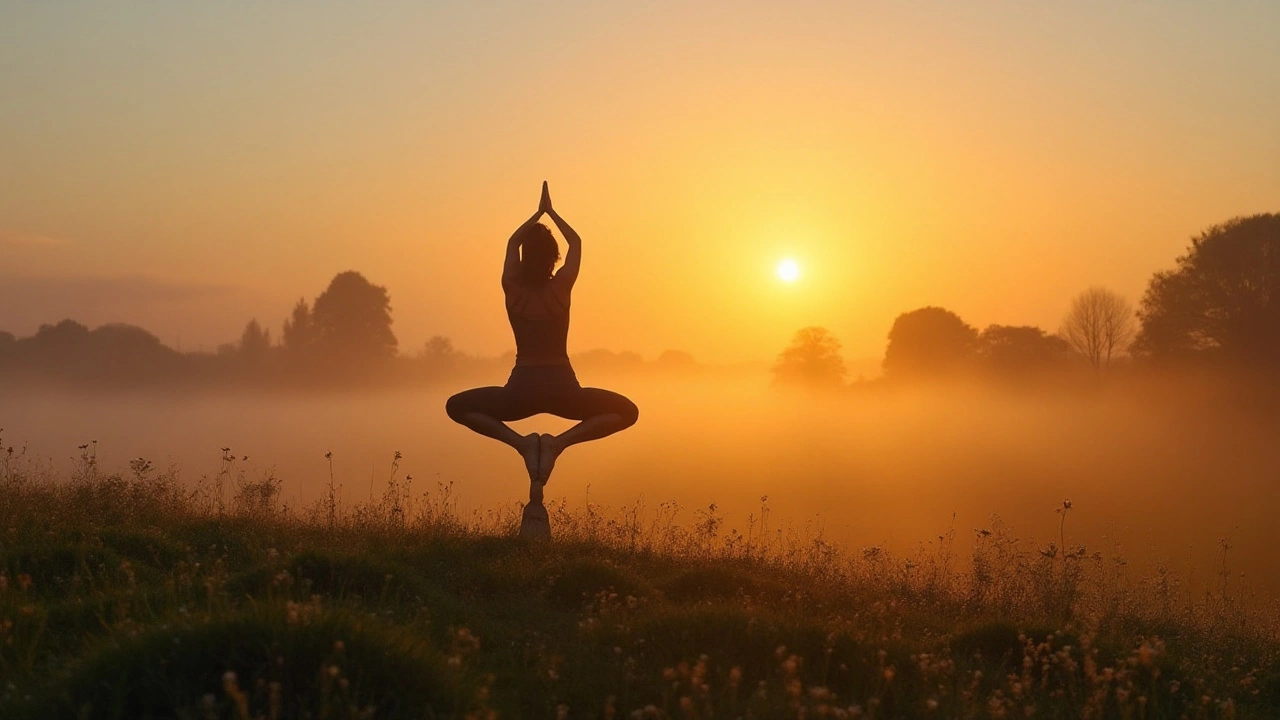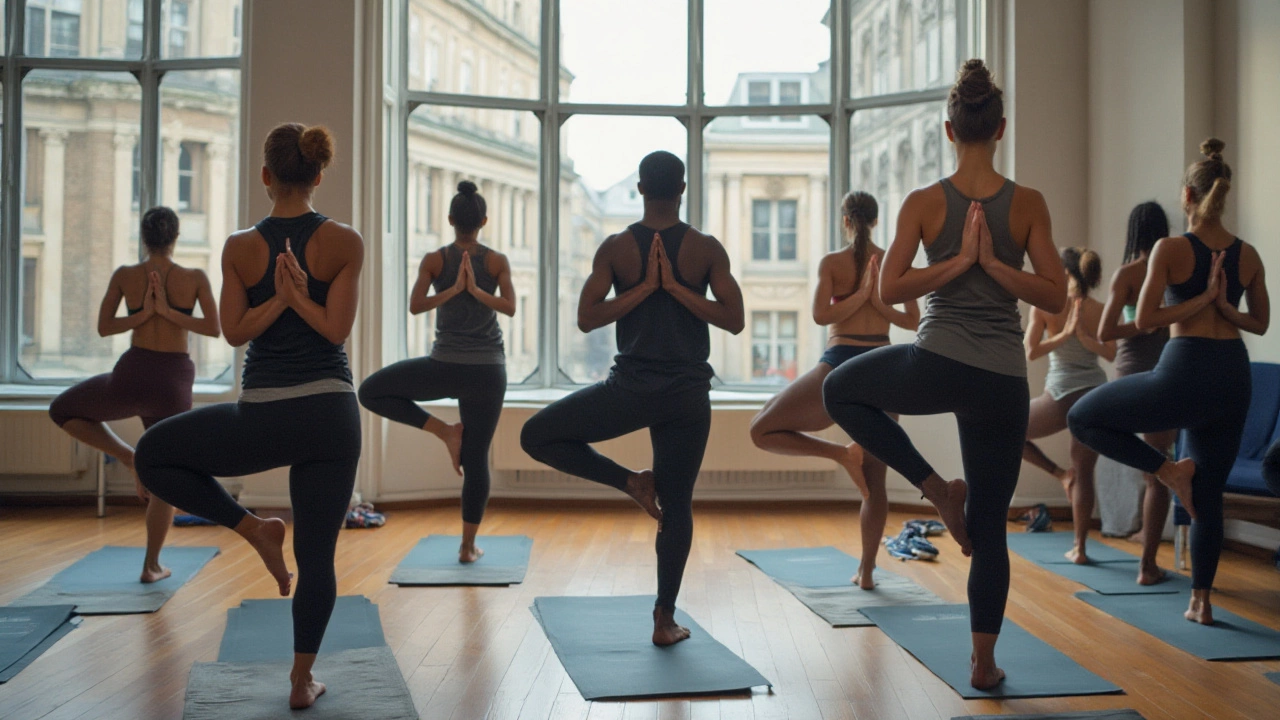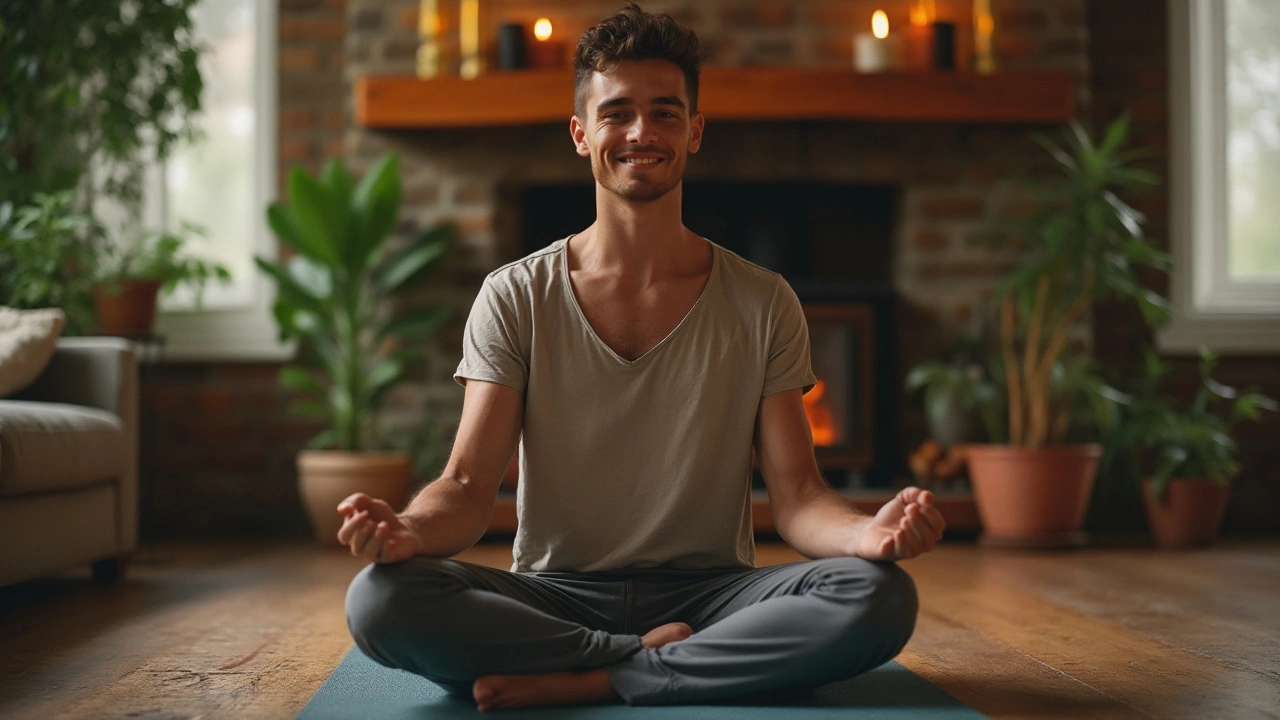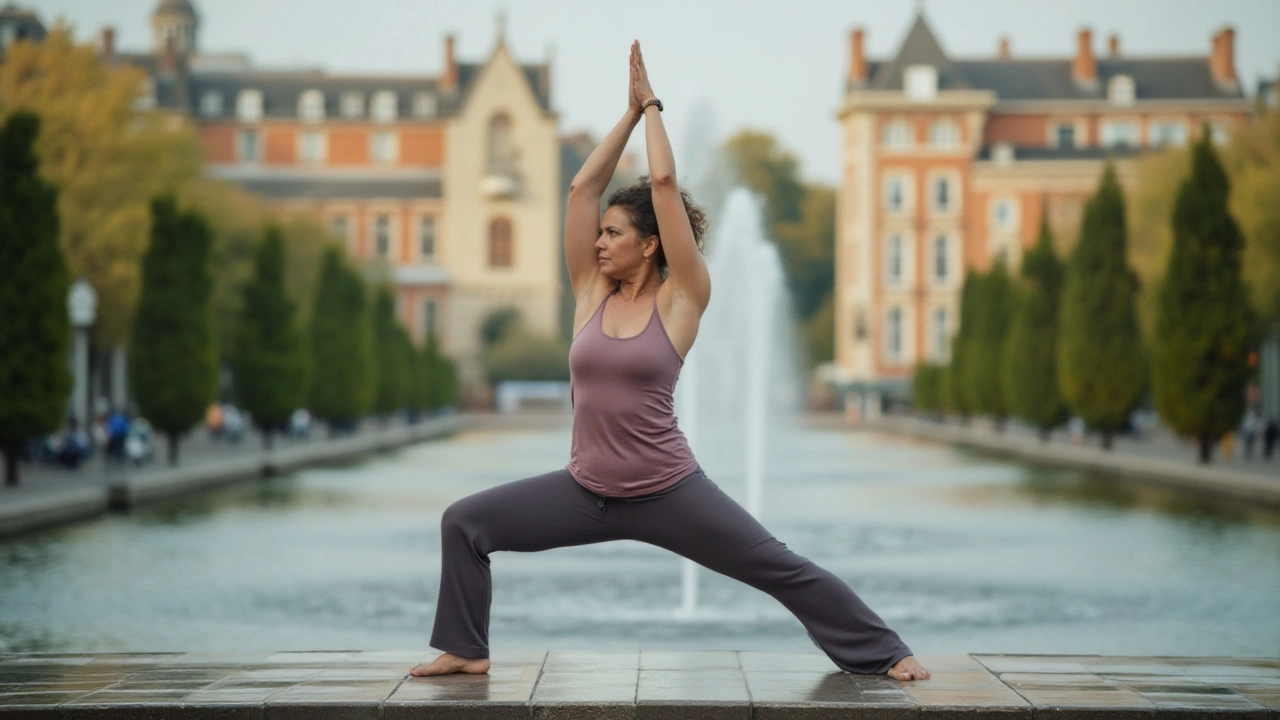
Yoga is more than just a series of stretches and poses; it's a lifestyle that's rooted deep in tradition and offers transformative benefits for both mind and body. These days, many are curious about how quickly they can expect to see physical changes when they commit to a consistent yoga routine.
There seems to be a certain magic in how yoga deeply impacts our physical form, often before we even realize it. But what's really happening beneath the surface? And how soon might these changes become noticeable? Whether it's improved flexibility, increased muscle tone, or a newfound mental clarity, yoga holds the potential for profound transformation.
This article offers insights into how yoga starts to work on your body and mind from day one and provides practical tips for those eager to kickstart their yoga journey and amplify their results. Let's unravel the secrets behind this ancient practice and discover how quickly it can change your body.
Yoga is an ancient practice, but its effects on the body can be explained through modern science. When you perform yoga, you're participating in an intricate dance of muscle, bone, and breath, powered by your body's complex systems. Each asana, or pose, prompts a multitude of physiological responses. Fascinatingly, yoga not only stretches the body but also works at a cellular level. Muscle fibers elongate, and the strategic holding of poses engages muscles that might remain largely inactive in daily life. Meanwhile, the familiar downward-facing dog isn't just relaxing; it's a full-body stretch that strengthens. Your nervous system also benefits. The intentional breathing central to yoga stimulates the parasympathetic nervous system, which reduces stress, lowers heart rate, and brings about a calm state of being.
This blend of movement and breath is more than just a workout. It's a comprehensive enhancement for both brain and body. With regular practice, brain function improves as yoga has been linked to increased serotonin production and a boost in key proteins that optimize brain function and promote neuroplasticity. Dr. Sat Bir Khalsa, a neuroscientist and yoga researcher from Harvard Medical School, once noted, “Yoga should be systematically incorporated into medical practice as a complementary, non-interventionist approach to health improvement.” The coupling of movement with meditative breathing causes a decrease in cortisol production, thus diminishing stress responses. Studies consistently show those practicing yoga regularly have lower levels of stress biomarkers compared to non-practitioners, establishing yoga as an impactful tool for mental health, as well as physical.
While yoga has gained popularity as a means to achieve flexible physiques and tranquil minds, it's essential to look at its myriad impacts on the body's systems. Regular engagement encourages cardiovascular fitness, aligning yoga with potent aerobic exercises. Heart rate variability, an index of cardiovascular health, is often significantly improved among yogis, indicating the heart's enhanced capacity to respond to various stressors. Additionally, engaging in yoga can optimize sleep patterns. By fostering relaxation through targeted breathing exercises and mindful movements, yoga helps balance the body's melatonin levels, promoting better sleep quality. A comprehensive understanding of yogic effects highlights its indispensability not only as a fitness routine but as a pathway to a balanced lifestyle. So when you step onto the mat, you're embarking on a journey that beckons a holistic transformation within you.

When people talk about yoga, they often mention flexibility, but the physical transformations from a consistent practice go far beyond just touching your toes. With regular dedication, yoga reshapes your body in several profound ways. Initially, those committed to their practice might notice a subtle yet clear adjustment in their posture. This occurs as yoga strengthens core muscles, encouraging proper alignment and balance. Not only does good posture impact your overall presence, but it also relieves strain on your muscles and joints, preventing long-term pain.
In just a few weeks of regular practice, many individuals report enhanced muscle tone. While yoga might seem gentle, it involves holding positions that engage multiple muscle groups simultaneously. Through these dynamic movements, muscles become leaner and more defined. The effect is not bulk but streamlined strength, delivering a firmer appearance. Besides, improved circulation from these poses supports deeper tissue nourishment, contributing to the detoxifying process and the natural glow of your skin.
Among the myriad of changes, perhaps the most compelling is the increase in joint strength and flexibility. Every pose you engage involves a range of motions that lubricate and build joint muscles. This is crucial for maintaining mobility as you age. There's also a less obvious but equally vital change happening internally: the increased bone density. Weight-bearing poses are scientifically proven to fortify bones, reducing the risk of fractures and conditions like osteoporosis.
The beauty of yoga lies in its inclusivity. Unlike high-impact sports, yoga caters to people of all fitness levels and ages, reducing the risk of injury while still providing serious conditioning benefits. In particular, the practice of breath control, or pranayama, enhances respiratory endurance, which works wonderfully even for those new to physical exercise. This holistic approach ensures an increase in stamina, allowing practitioners to explore more challenging routines over time.
"Yoga's purpose is to build strength, awareness, and harmony in both the mind and body," says Natalie Nevins, DO, a board-certified osteopathic family physician. Her statement affirms the dynamic balance yoga brings to the table, addressing both physical and mental well-being.
A Harvard study published in 2021 indicated that a consistent yoga routine could lower body mass index (BMI) in overweight individuals. In a group practicing yoga thrice a week for just six weeks, participants noted an average BMI reduction of 1.2 points. These changes underscore how yoga quietly influences the metabolic rate, complementing other aspects of fitness and overall health.
When considering incorporating yoga into your lifestyle for physical change, it's crucial to explore diverse styles like Hatha, Vinyasa, or Ashtanga, each offering unique benefits. Commitment is essential, as the most significant changes occur with regular practice. Aim to practice yoga at least three times a week, gradually increasing the intensity and duration as your body adapts and strengthens.

Delving into the depths of a yoga practice reveals its profound impact not only on the body but also on the mind and emotions. One of the immediate mental benefits of engaging in the **yoga** practice is the sense of calm it instills. Modern life often brings with it a whirlwind of stress, with deadlines, expectations, and constant connectivity pressing down on us. Yoga provides an oasis of tranquility amidst this chaos, allowing practitioners to center themselves and find peace within. This peace doesn’t occur by mere chance; it's the result of intentional breathing techniques and mindful movements. When you focus on breathing deeply, it activates the body’s parasympathetic nervous system, which in turn reduces stress and promotes relaxation, lowering heart rates and blood pressure.
Beyond the immediate stress relief, regular yoga practice fosters emotional resilience. By frequently visiting the mat, individuals learn to navigate their emotions with greater ease and clarity. This ties in with the philosophy that **yoga** encourages an introspective journey, teaching us to observe our thoughts and feelings without judgment. Over time, this becomes a valuable tool for emotional regulation, empowering the practitioner to handle life's ups and downs more gracefully. Notably, a study published in the "Journal of Clinical Psychology" found that participants who practiced yoga regularly reported higher levels of overall happiness and a significant decrease in symptoms of depression and anxiety. This is largely due to the combination of physical movement, meditation, and the deep sense of community that yoga often brings.
It’s also worth noting the shift in cognitive function that many enthusiasts experience. Routine engagement with yoga leads to improved focus, concentration, and memory span. Much of this enhancement is credited to meditation components inherent in most yoga styles. Meditation encourages the brain to operate in alpha states, known for creativity and problem-solving. Many practitioners find that their ability to remain present improves drastically, impacting productivity at work and personal satisfaction at home. Furthermore, a healthy yoga practice can promote self-awareness, allowing individuals to cultivate empathy and compassion not just towards others but critically towards themselves. In the words of B.K.S. Iyengar, one of the most revered yoga instructors,
"The rhythm of the body, the melody of the mind & the harmony of the soul create the symphony of life."While this might sound too poetic to hold practical weight, it encapsulates the transformative journey that yoga facilitates, intertwining the mental with the emotional in an intricate dance of personal growth.

Embarking on a yoga journey is an exhilarating venture, and while the benefits come naturally over time, you may wonder how to expedite the transformative effects of this practice. One key strategy is maintaining consistency. Carving out time each day, even if it's just 15 to 20 minutes, establishes a routine that helps the body adapt and change more swiftly. It's about making yoga a part of your lifestyle, not just a task to tick off your list. Familiarizing yourself with poses is essential, but the focus should be on quality rather than quantity, ensuring each movement is performed with mindfulness to avoid injuries and ensure maximum benefit.
Another pivotal factor is setting realistic goals. Beginners often set lofty expectations, only to feel discouraged when results don't happen overnight. Instead, set small, achievable milestones and celebrate each success. This builds confidence and encourages you to keep going. As with any fitness routine, balance is vital. Pairing yoga with a balanced diet rich in nutrients can accelerate the changes you notice in your body. Hydration also plays a significant role; it helps maintain flexibility and flush toxins from the system, amplifying yoga's effects.
It's essential to explore various yoga styles. Each offers unique benefits; for instance, Vinyasa focuses on flow and breathwork, while Ashtanga aims to enhance strength and flexibility. Trying different styles can keep your practice fresh and challenging. Surround yourself with a supportive community or a mentor. Engaging with other yoga practitioners not only offers a sense of camaraderie but provides opportunities for learning and growth. When doubts creep in, a seasoned yoga teacher can offer valuable advice to navigate through plateaus or challenges.
A respected yogi, Sharon Gannon, once said, “If you want to see and feel what yoga can do for you, you have to practice, practice, practice.” This highlights the importance of dedication and persistence in experiencing yoga's full potential.
Integrate breathwork and meditation into your routine to deepen your practice. Yoga is as much about the mind as the body; emphasizing breathwork can improve concentration and enhance the physical benefits of the poses. It also aids in relieving stress, which complements the holistic changes yoga promotes. Consider tracking your progress in a journal to reflect on changes you notice both physically and mentally. This can help identify patterns, motivate you, and refine your practice.
Lastly, listen to your body. Progress should be natural and sustainable, so push your limits but avoid overexertion. Each person's journey is unique, and yoga honors that individuality. Remember, the essence of yoga is not the achievement of perfect poses but the journey of self-discovery. By following these tips, you'll not only maximize your results but cultivate a lifelong appreciation for the art and discipline of yoga.